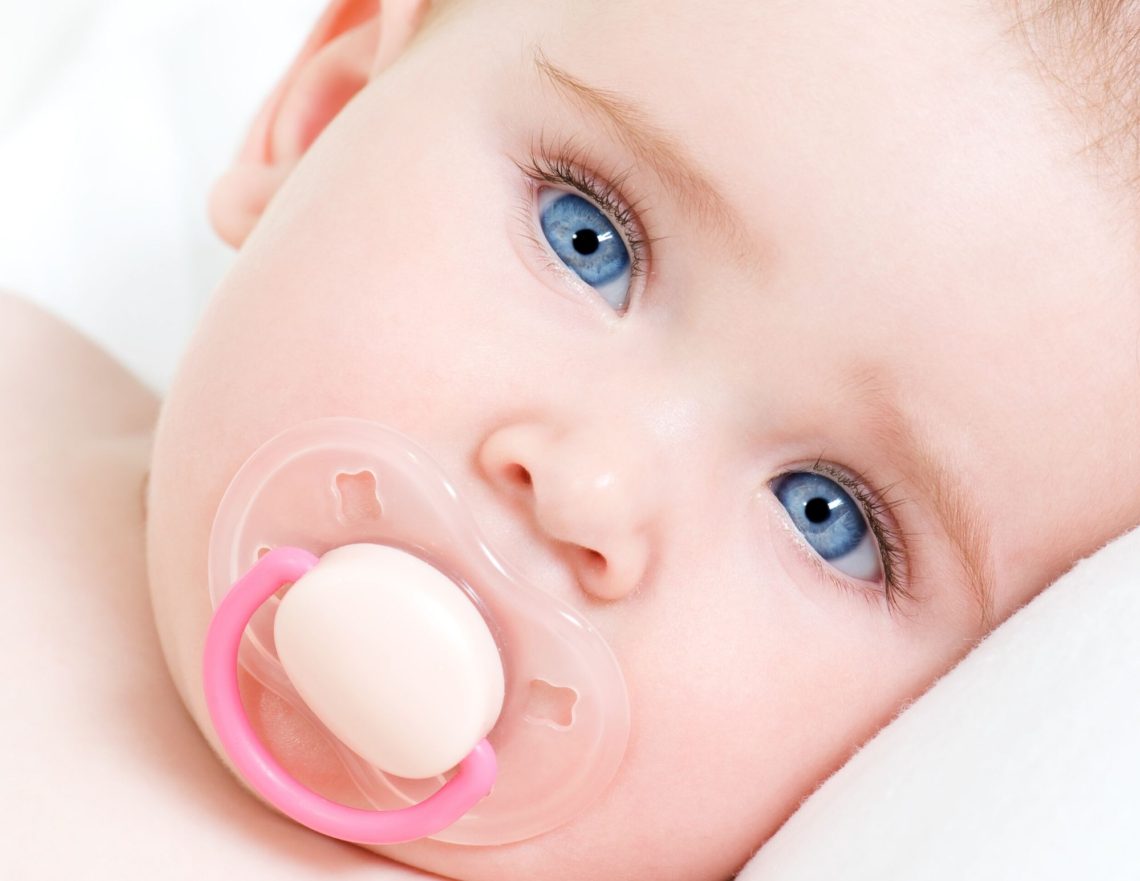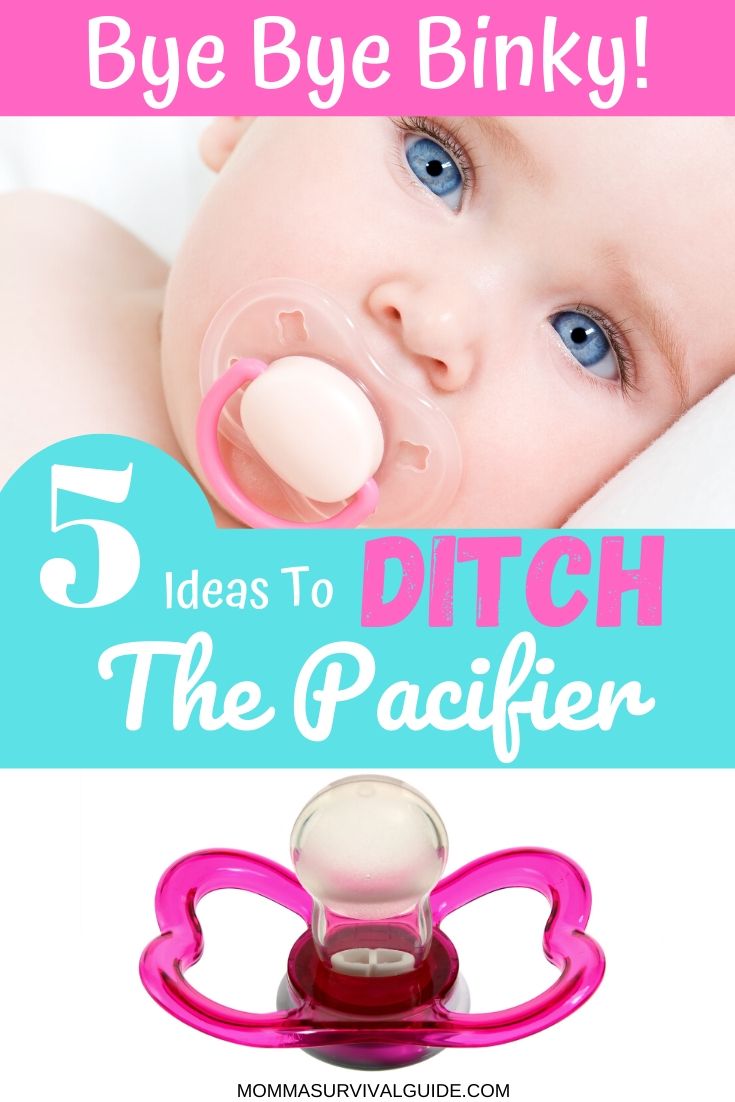
Toddler Pacifier Weaning – Methods & My Experience
Call it a binky, pacifier, paci, your baby’s first true love, we all have a name for it. And we all know that this thing was the best and is now the worst thing of our existence as parents, and that’s because of the dreaded binky weaning phase.
As the oldest of five children, all of whom used a binky, I thought I kind of knew what I was in for when it came time to take our daughter’s binky away. Keywords “kind of.” In all actuality, I had no idea just how hellacious this week would actually be.
Mommas it sounds daunting, I know. And I’m sure you’ve put this off for as long as possible. However, I’m not writing this to scare you. Actually quite the contrary, I am writing this to help you get through weaning your baby off their binky.
As I’m writing this, we took our daughter’s binky away two weeks ago exactly, and let me just reassure you, I was convinced my daughter would never sleep again, but things are great now. For the most part, she goes to sleep and naps without so much as a whimper. But it took us about a week to get to this point.
I’m writing this post to share my story of weaning off the binky, to help provide comfort, solace, and maybe even insight to new moms, who are about to or in the midst of battling this obstacle. Here are some methods, as well as my experience in toddler pacifier weaning.
Timing Is Everything
So when is the right time for toddler pacifier weaning? Most dentists and pediatricians will agree that binkies can be beneficial to babies 6 months and younger due to the fact that they help prevent SIDS (Sudden Infant Death Syndrome).
Once they are 12 months, babies don’t need the sucking motion in order to self-soothe anymore so some pediatricians and dentists will recommend weaning around this time. Personally, I feel that this decision is up to the parents, and their discretion as to whether their child is ready or not.
When Darin and I first took Hayvn’s binky away she was too young. We didn’t know this at the time, but we learned quickly. She was about 13 months old and still couldn’t understand the idea that the binky was no more.
There was no reasoning with her, and nothing could calm her down. We lasted one day and half a night before we caved and gave her a binky.
Fast forward 5 months, at about 18 months old, Hayvn was ready. We could tell that she understood more, and our pediatrician had told us to consider taking it away at this point.
So, the day after Christmas, we decide to finally call it quits with the binky once and for all, and just went for it (I’ll get into the different methods later).
That being said, when is best to take your toddler’s binky away? Well really that’s ultimately up to you, however, there are some recommended timelines.
Most pediatricians and dentists agree that the binky absolutely must go by the age of 2. Some even say that it’s good to take after 12 months of age. Experts say that once a baby has turned a year old, they no longer need a sucking motion to soothe themselves, they are ready to begin self-soothing.
As you can see, Hayvn wasn’t ready at the age of 13 months and looking back now, it’s even more clear to me that she simply wasn’t ready or capable of understanding it all. Some babies will be okay at this age, but mommas you know your baby so go with your instincts.
Personally, from all of the pediatricians and dentists that I’ve talked to (I’ve consulted multiple) they all pretty much agree on age 2. So, if 12 months seems too early, that’s fine, just aim for the binky to be gone by age 2 to avoid any permanent damage to their teeth.
Something else to consider is your life circumstances. If you are going through a huge life change such as a big move, a job change, adding a new baby to the family, consider this when taking your baby’s binky away.
If they use a binky, it’s typically for comfort, and if you take away a major comforting device during a stressful time, you will have much more difficulty in successfully weaning your baby. Give them a few weeks or months to adjust to the life change and then try weaning.
When we tried taking Hyavn’s binky away at 13 months, we had just barely completed a big move across two states. Looking back now, I can’t believe we tried to take her binky then (insert face-palm emoji here) but hey you live and you learn.
Another important thing that I need to clarify is this. Mommas, no matter when you decide to start weaning off the binky, you must stay committed. There are no ifs, ands or buts about this, no matter which method you choose. Because the minute you cave in, it’s game over. You have officially reset all the work you had done up until this point. So if you’ve decided to start the process, stay committed.
Make Sure Everyone Is On Board
There is nothing more detrimental to binky weaning, than someone offering a binky to your toddler during the process. So, make sure everyone involved in your toddler’s life, is on board.
This means, mom, dad, grandma, aunts, uncles, daycare, anyone who is ever around or who cares for your child, must understand that the binky is a no go.
This is crucial in order to successfully wean your baby, and it can avoid prolonging the process.
Methods Of Binky Weaning
Now, that we’ve made this commitment and everyone is on board, it’s time to decide on the way you want to approach this process. Here are a couple of tried and true methods to get your toddler off their binky. When all is said and done, you know your baby best, and you will know which approach is best for you.
Cold Turkey Vs. Gradual
There are two different styles you can choose when navigating this process. You can go with the gradual approach where you only give your baby their binky at certain times (nap time, bedtime, downtime, grandma’s house, etc.).
Or you can go cold turkey and take it away permanently all at once.
- Oops! Your Binky Broke
This method entails, mutilating the binky, so to speak, so that it is no longer usable and then showing it to your toddler, so they can understand it is broken. Most often, with this method, parents will cut on the tip of the nipple, so that their child can no longer suck on it.
- The Yucky Binky
Make the binky unappealing by adding a little lemon juice or vinegar to the nipple. The minute your toddler puts the binky in their mouth, chances are they will spit it back out. Stay on top of this and make sure that any time the binky is offered to your child, there is always a bad taste on the nipple. This way it becomes associated with a bad taste and is, therefore, more and more unappealing.
- The Pull Out Method
Alright alright, get your head out of the gutter, this is not what it sounds like. The pull out method is more of a gradual tactic. It entails you sneaking into your baby’s room once they fall asleep and pulling the binky out of their mouth. Take the binky with you, so when they wake up looking for it, it’s no longer there, and let them soothe themself back to sleep.
- “Binkies Are For Babies”
This method is great for toddlers who want to be “big”. Simply tell them “binkies are for babies and you are a big girl/boy”, so you don’t need them anymore. This works for toddlers who are a little older and can understand this concept. It may be a little advanced for younger ones.
- Replace The Binky
The nice thing about trying this method is that it can be enforced gradually or cold turkey.
It’s perfect for any toddler that has an attachment to any other object besides the binky. It could be a stuffed animal or a blanket, it doesn’t matter, just anything that takes the place of the binky. This method can be used even if your child shows no attachment to another object.
You can try introducing objects and help them form an attachment once their binky is gone. Some parents recommend spraying the mother’s perfume or breast milk on a blanket and offering it instead of a binky. Your scent will immediately soothe your toddler.
How I Weaned My Daughter Off The Binky
My daughter Hayvn is an extremely strong-willed, persistent child. She doesn’t let things go very easily, so I knew that this process had to be navigated delicately. We started with a gradual attempt by only letting her have a binky when she slept. We started this around the time she was 9 or 10 months old. She responded really well.
She quickly learned that her binky was only for sleepy time and never posed any resentment to that idea. So we did that for a few months and then decided to take it away fully. Like I mentioned earlier, the first time we attempted binky weaning, she was about 13 months old and for various reasons, it didn’t work.
Aside from a major life change, I think one of the major reasons it didn’t work that time was because of the way we approached it. We simply just took her binky when she wasn’t looking and put her to bed without offering her one.
Like I said Hayvn is strong-willed and she doesn’t just forget things, so of course, she was looking for her binky, but couldn’t find it. I personally think she was confused, and we quickly learned that was not the way to approach this process for her.
That being said, we attempted this again when she was 18 months old, and we cut the nipple off her binky and showed her the pieces. We told her that her binky was “broken” and we offered her the base (the part without the nipple) so she could see for herself.
She tried sucking on the broken binky and quickly realized it wouldn’t work, and she looked at us and said: “it broke.” Now, if you ask her what happened to her binky she will tell you “it broke.” We allowed her to carry around the “broken” binky for a few days, but we never offered her a normal binky again.
This resonated with her because she decided she didn’t want to use it anymore since it was “broken”, which made the process a little easier.
So, overall we kind of combined the gradual method of limiting her binky to only having it in her crib, but we also utilized the cold turkey method when it came time to finally quit the binky.
As you can see, there is no right or wrong way to do this, and it’s a lot of trial and error. At the end of the day, you know your baby best and you know how they will respond to certain tactics.
There Will Be Tears, And Your Baby Will Cry Too
Another word of caution is to just hang in there momma. Toddler pacifier weaning looks different on everyone. Some toddlers, go down without a fight and hardly notice their binky is missing. For those of you who are blessed enough to experience this, I envy you.
However, if your toddler is anything like mine, they won’t go down without a fight, and there will be some hard times ahead, just know that it doesn’t last forever.
The first day that we took Hayvn’s binky, she went down for a nap pretty easily. She whined and cried a little, but eventually, after about 5 minutes, she passed out. I thought to myself “wow, I have nothing to worry about, that was so easy” Mommas, I was so very wrong.
What came later that night at bedtime, forced me to eat those words. She screamed and sobbed for about 30 minutes before giving in to her exhaustion (don’t worry, we consoled her within that time), and before that, nothing Darin and I could do would console her.
We had about two more days (nap time) and nights (bedtime) of this, and it was almost unbearable. We tried everything from offering a blanket, a baby doll, a warm milk, but nothing really helped. Until…
We gave her a tennis ball. Yes, you read that right, a tennis ball. For whatever reason, Hayvn has an obsession with balls, of any shape or size. Upon taking her binky away we noticed she had grown fond of a tennis ball that we had given her a few days prior, so jokingly I suggested to my husband “let’s just give her that ball to fall asleep, it seems to comfort her.”
We looked at each other as we experienced the same epiphany, and thought hey we have nothing to lose, and it worked!
And now two weeks later, here we are. Hayvn still sleeps with a tennis ball, but she goes down just fine. So just remember when you’re on day 2 or 3, and you’re seriously considering caving in, don’t.
I promise your sanity will come back, and you will make it through.
I Want To Hear From You!
I hope you enjoyed this post, and I hope you found it helpful. I would love to hear your feedback. If you have any questions, comments, or personal experiences please reach out in the comments section below!
XOXO

















10 Comments
Jeff
I really love your website and the topics you are writing about, you will never be for a lack of motivation with your child to inspire you.
This information will be priceless to new parents, you are doing a fine thing writing articles to help parents raise their children and overcome all the obstacles children can give parents
Jeff
Madysen
Hi Jeff!
Thank you for visiting my site and for all your kind words, I really appreciate it. You nailed it, that’s exactly my goal, to help other parents learn from my experiences to overcome all the obstacles of parenting. Thanks for stopping by 🙂
Paul Thomas
Fantastic post a lot of great information
Madysen Wilcox
Thank you that means a lot 🙂
Stacey
One of my friends has a baby who she is thinking of weaning off her dummy, she is 9 months and only has it at night at the moment. I don’t have children but this is a great post for learning what I have to come when the day comes 😀 Thank you for sharing!
Madysen Wilcox
Hi Stacey!
I’m glad you found this post, and I appreciate you sending it to your friend. Binky weaning, in our case, was no eaasy feat. However, I hope that with this post, it can help others like your friend, to get through it!
Cherise
Oh my, where was all this great info when my kids were little. Nothing worse than trying to lose the “sucky” haha. Thank you for the great ideas, will be sharing with friends who have littles still 🙂
Madysen
Hi Cherise!
It’s such an overwhelming journey to embark on, so I thought I would add my two cents to help anyone that I can, thank you for stopping by! I appreciate your comment 🙂
Geri
I have a home day care and I work with young children on a daily basis. If a child attends day care, caregivers can also assist in the binky weaning process. Usually children are in day care for hours a day and letting them go without binky at day care may help with weaning at home. So, yes, ensure that everyone is on board.
Madysen
Hi Geri!
Thank you so much for your feedback, it’s nice to hear that from a different perspective other than the parent, because like you said some children are in daycare for a large part of the day, so the habits they develop there are likely to stick, so it’s key to make sure everyone is on board through this process. Thanks for reading 🙂